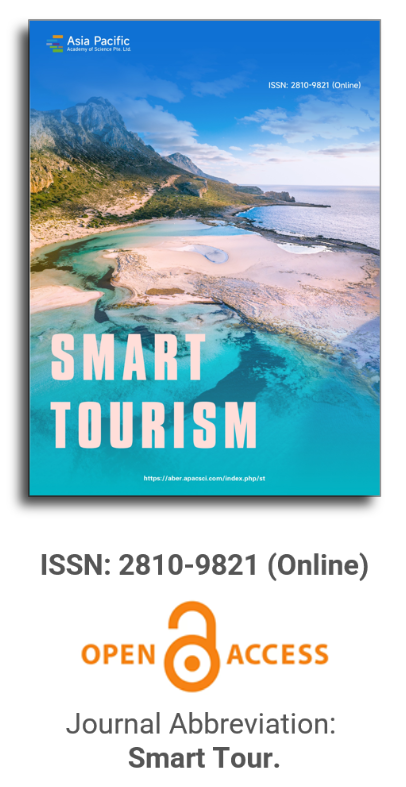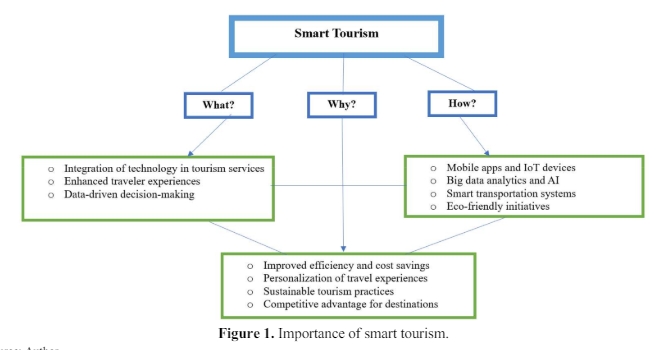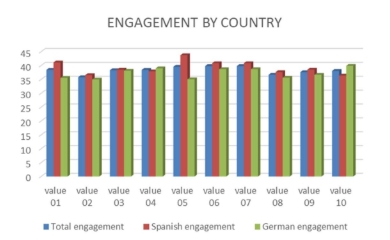


Issue release: 30 October 2021
On the basis of the analysis of the new tourism logistics mode in the perspective of the whole area tourism, it points out the change to the city The new requirements of the public operation and management service platform of tourism logistics in the city region are pointed out, and the necessity of building a cloud service architecture for urban tourism logistics is established. The necessity of constructing urban tourism logistics cloud service system architecture is established. The feasibility of applying blockchain technology to the construction of tourism logistics cloud service platform is also analyzed accordingly. At the same time, the framework model of hybrid cloud architecture of urban tourism logistics based on BaaS is proposed.
Issue release: 30 October 2021
The present study aims to analyze innovative initiatives related to the promotion of startups in Brazil, Spain and Portugal, in the context of smart tourism destinations (STD). Based on an exploratory and descriptive study with a qualitative approach, programs related to innovation and entrepreneurship were identified in the countries under analysis, as well as concrete initiatives of innovation in tourism related to startups. Therefore, 60 new items per country, out of a total of 180, were selected on the Google platform. The results of the research show that there are guidelines linked to startups in the three countries. In general terms, it was possible to observe that from startups. It is possible to promote the development of ITD, since the initiatives identified contribute, among other aspects, with experiences.
Issue release: 30 October 2021
With the development of information technology and the popularization of Internet applications, the proportion of tourists traveling with groups continues to decline, free travel has become the main form of travel, and the team of new tourists continues to grow and develop. This paper selects the travel notes of tourists as the research object, takes Xi’an as the tourism destination, collects samples, uses the content analysis method and applies the Rost CM6 software for in-depth analysis, obtains the tourism attractions and service facilities that tourists pay the most attention to, constructs the social semantic network of Xi’an tourism, and infers the needs and behavior characteristics of new tourists from the aspects of tourism viewing, tourism communication and tourists’ consumption, It also puts forward suggestions on the operation and marketing activities of tourism destinations and tourism enterprises.
Issue release: 30 October 2021
It is pointed out that with the progress of social development and science and technology, people have entered the era of mass tourism. Tourism industry relies on information more and more, but there are still some groups who cannot obtain tourism information in time, cannot share the fruits of information society, and become information disadvantaged, which affects their own development and even the harmonious development of society. Taking the elderly tourist group in Dalian Tiger Beach Scenic Area as an example, we explored the tourism market assistance strategy for the elderly tourists group in the context of intelligent tourism by using literature analysis, SWOT posture analysis and questionnaire survey. The results of the study show that the elderly have low curiosity, distrust and operational barriers in the access to information, the operation of smart tourism devices and the application of tourism app. For this reason, it is proposed that the development and promotion of smart tourism should be strongly supported at the government level; at the level of scenic spots themselves, they should scientifically and rationally design tourism routes and use unique tourism resources to build a big data platform for senior tourism information to attract tourists; at the level of smart tourism APP design, application and security, they should strive for continuous improvement and active promotion to increase user experience and trust; at the level of information disadvantaged groups themselves At the level of improvement, they should actively accept and learn new things, improve their learning enthusiasm and keep pace with the times.
Issue release: 30 October 2021
In this paper, the implementation of ISO 9241-210:2010 (Human Centred Design for Interactive Systems) standard for the development of a mobile application is presented in order to strengthen the user experience when using the mobile application in situ. Following the phases that the standard dictates for the development and evaluation of software and hardware in order to obtain a working prototype, and at the end of the process a product. The implementation of the standard allowed to generate an initial prototype validated by real users (tourists), so that, for future work will be carried out using artificial intelligence (AI) techniques and data analysis, these same, will complement this work, resulting in a fully validated and functional application for Smart Tourism. It should be noted that the purpose is to use User-Centered Design (UCD), thus achieving a high-fidelity prototype.
Issue release: 30 October 2021
According to the principles of tourism route design and the needs of tourists, the teaching and learning optimization algorithm was improved, and a tourism route optimization method based on the improved teaching and learning optimization algorithm was established. The optimization test of travel routes in Hanzhong area shows that the tourism routes designed by using this algorithm are feasible and efficient, and it has certain practical value for tourism traffic planning, tourism routes design, especially for self-driving tourists to carry out efficient tourism activities.
Issue release: 30 October 2021
With the wide application of information technology in tourism, new technologies and applications have a profound impact on the development of tourism, and promote the transformation of tourism research paradigm. Based on social media and closely combined with the reality of tourism, based on the review, the studies on social media and travel abroad related definition, the types of social media from social media, social media impact on tourism subject and object, social media applications in tourism in four aspects has carried on the summary and review. It is found that the foreign research on social media and tourism is in a rapid development stage. The profound impact of social media on tourism has gradually been recognized by scholars, but the breadth and depth of research still need to be strengthened. Finally, relevant research enlightenment is proposed from the perspective of basic theory and practical application.
Issue release: 30 October 2021
Issue release: 30 October 2021
This paper discusses the main trends that digitalization has brought about in hospitality and tourism. The basic approaches of Industry 4.0 and the processes and levels of technification are presented, as well as the digitization that has taken place in the tourism sector, highlighting the main technologies such as digital applications, mobile devices, Big Data, the internet of things, virtual assistants, the cloud, virtual and augmented reality, robots and chatbots, as well as new designations for tourism activities, such as smart tourism and e-tourism.
Issue release: 30 October 2021
Some key technologies on how to build large-scale virtual tourism systssems comprehensively on Web browsers and mobiles were analyzed and the current R&D status on Web3D virtual tourism was surveyed insightfully. Then, some methods were summarized, including 3D trees or plants modeling, 3D architectural modeling, 3D Virtual Human behavior modeling, virtual agents path planning, collision detection and progressive transmission strategy suitable for developing large scale Web3D tourism scenarios. Also, some bottleneck problems of Web3D virtual tourism system were investigated. At the same time, the lightweight 3D engine, the lightweight 3D modeling, the lightweight 3D streaming and P2P based progressive transmission of huge Web3D tourism contents would become much helpful to breakthrough those bottlenecks of Web3D tourism systems were pointed out. In addition, all kinds of Web3D engines in terms of lightweight, realism and efficiency that would be a good reference for developers to choose during various applications were compared comprehensively. Finally, the prospect of future investigation of Web3D tourism system is presented, which will be going on in terms of four characteristics lightweight, high-speed, realism, beauty.
Issue release: 30 October 2021
Promoting the integrated application of blockchain technology and smart tourism is conducive to improving the efficiency of smart tourism public service platform and guiding the innovation of tourism public service mode; It is conducive to cultivating the new connotation of smart tourism development and activating the new driving force of tourism development; It is conducive to cultivating new forms of tourism and providing new opportunities for the development and transformation of tourism. Many regions have laid out tourism and smart tourism as demonstration application fields for the deep integration of blockchain and real economy. Its basic orientation is to build blockchain tourism platform, establish multi-party consensus mechanism, build blockchain tourism credit management system, expand application fields and enrich application scenarios. In order to accelerate the high-quality development of tourism enabled by “blockchain + smart tourism”: Firstly, accelerate the research, formulation and introduction of relevant policy implementation plans; secondly, build a smart tourism ecological engineering system supported by blockchain technology; thirdly, try to build a blockchain tourism credit management system to solve the market pain points; fourthly, focus on promoting tourism consumption blockchain points to build a global tourism chain.
Issue release: 30 October 2021

Prof. Hung-Che Wu
Nanfang College, Guangzhou
China
Indexing & Archiving
Asia Pacific Academy of Science Pte. Ltd. (APACSCI) specializes in international journal publishing. APACSCI adopts the open access publishing model and provides an important communication bridge for academic groups whose interest fields include engineering, technology, medicine, computer, mathematics, agriculture and forestry, and environment.


 Open Access
Open Access

.jpg)
.jpg)

.jpg)

